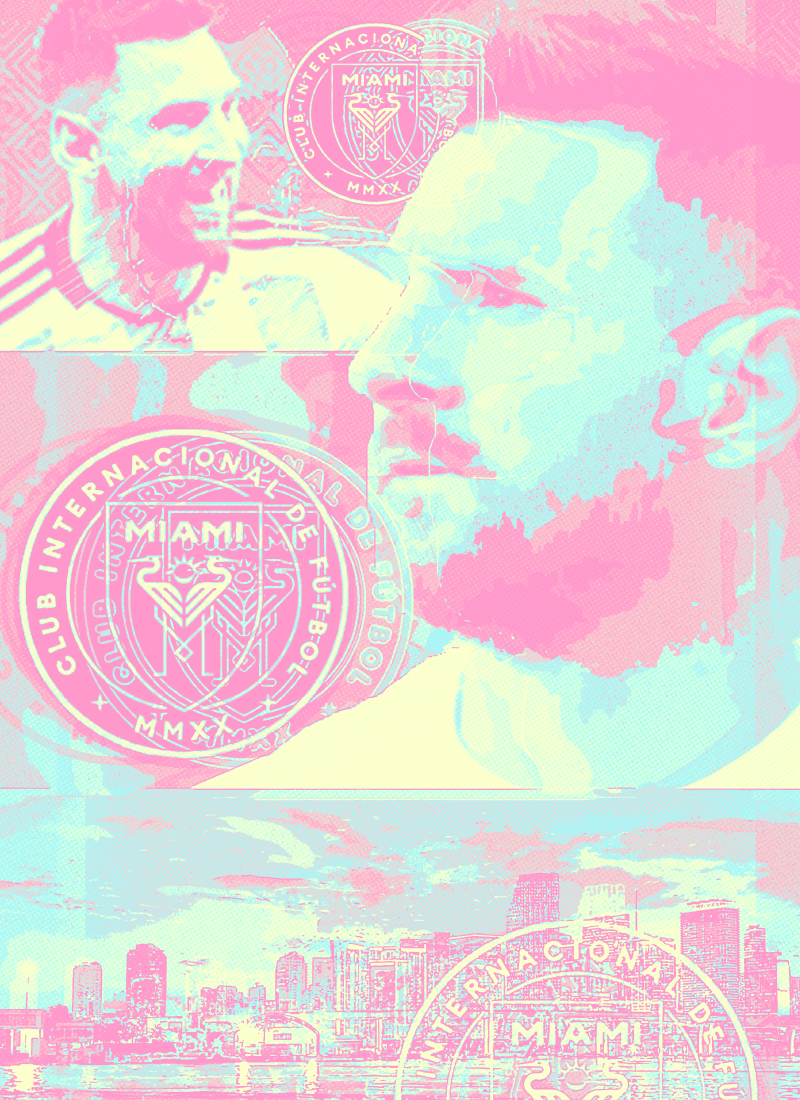
Leo’s Impact on MLS and the Hobby
It’s not the first time, but it’s not quite like the others.
In 2007, English midfielder and cultural icon David Beckham changed how the world viewed American soccer by leaving international superpower Real Madrid to sign with the LA Galaxy of the MLS. It was a move made possible by a new rule designed to give MLS teams cap flexibility called the Designated Player Rule, which is now known informally as the “Beckham Rule.” About seven years later, a trio of stars were convinced to come stateside: striker David Villa, midfielder Frank Lampard, and attacking midfielder Kaká, who became the first-ever Ballon d’Or winner to play in the MLS.
Today, there’s Galaxy striker Chicharito, Chicago Fire winger Xherdan Shaqiri, and Toronto FC winger Lorenzo Insigne. Each player has had successful careers at the highest stages of the game.
But none of them are Leo.
Fresh off a World Cup victory — the last remaining feather in a cap that’s now perhaps the most decorated of all time — Argentinian forward Lionel Messi is in a class of his own. And when his contract with France’s Paris Saint-Germain expires at the end of this month, he’s taking his talents to South Beach to play for Inter Miami CF.
“I’m certain that Leo is going to change the league in the United States,” Neymar said of his teammate and close friend’s move to America. “I believe the league will become a lot more popular.”
Of course, Messi’s arrival legitimizes the league; one of the residual benefits is that he also legitimizes the league’s cards. Here’s why you should keep an eye on MLS cards.
Where Do We Stand?
The MLS is still a relatively new league, and it doesn’t have the rich history of its peers in American sports. For example, the league’s first season was in 1996, shortly after the NFL celebrated its 75th anniversary.
While the MLS has some catching up in popularity, it’s growing rapidly, with seven new teams joining in the past five years (and an additional franchise slated to join in 2025). Dillon Stambaugh, the director for soccer brands at Topps, said that the company’s MLS cards are growing in popularity alongside the league.
“As we’ve started to see more investment in different clubs, we’ve also seen more demand for these cards,” he said. He added that, like any other card product, demand is primarily driven by that year’s rookie class, and some years are better than others.
Messi, meanwhile, is … well … Messi. He’s unquestionably one of the best players to grace the pitch. Messi is the only player to win the coveted Ballon d’Or seven times, and that only scratches the surface of his career achievements.
When you’re talking trading cards, Stambaugh said only a few players can even sniff Messi’s popularity: Pelé, Diego Maradona, Cristiano Ronaldo, and recently, Erling Haaland. Historically, the one knock against Messi was that he hadn’t delivered Argentina the international glory it lacked for nearly three decades. Still, victories in the 2021 Copa América and last year’s World Cup officially silenced all doubters. With those wins on the international stage, Messi cemented himself as a titan of the game.
“Messi cards are sought-after, to begin with, but after winning the World Cup, you saw a lot of his vintage stuff increase in value,” Stambaugh said. “Messi rookie cards from his early days at Barcelona are some of the most expensive cards on the market.”
Bless This Mess
Now that pen has hit paper; the MLS is about to experience what’s known as the “Messi Effect.”
At Inter Miami’s last pre-Messi home game — a matchup with the Columbus Crew on July 4th — thousands of seats remained unsold, and tickets could have been had for under $50. (Nobody’s exactly rushing out to see the last-place team in the Eastern Conference.) But how about his expected home debut, a Leagues Cup matchup with Mexican side Cruz Azul? You’d be hard-pressed to find a seat for cheaper than $1,500. Every time Inter Miami hits the road, you can expect tickets well above $300 just to get through the doors.
Pre-Messi, Inter Miami’s Instagram page had about one million followers. But after his announcement, the account grew to eight million followers — more than the Dallas Cowboys and New York Yankees combined.
Likewise, many people are about to flock to MLS trading cards for the first time. Stambaugh said past Designated Players, like striker Zlatan Ibrahimovic, brought eyes to Topps’ MLS products, and their first cards on American teams were important. But Messi’s move is unprecedented, like if LeBron James left the NBA to play professionally in Australia. While Messi is 35 years old, he’s still playing excellent soccer, and he’s not coming to Miami to retire.
“With Messi, it’s going to be different,” Stambaugh said. “It’s almost unprecedented, considering all of the other options he had on the table. He’s made a statement by going to the MLS.”
What Can You Collect?
Even though he’s joining the league midseason, Messi will have a presence in Topps’ 2023 MLS cards. In addition to its flagship MLS line, Topps has two other Chrome® products: MLS Chrome and MLS Finest. And be on the lookout for Messi TOPPS NOW® cards in the future.
Even though everything’s moving so fast before Messi’s anticipated debut in July, Stambaugh said collectors could rest assured that they’ll have chances to chase Messi’s first Inter Miami autos this year.
“His first Inter Miami cards are going to create quite a buzz,” Stambaugh said, “and hopefully, they’ll drive people to collect this awesome product that we have.”